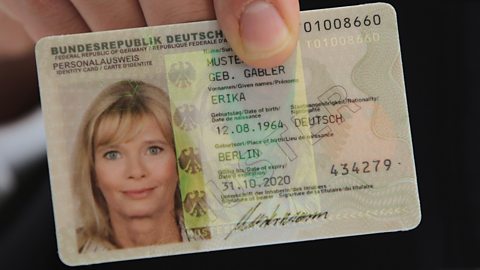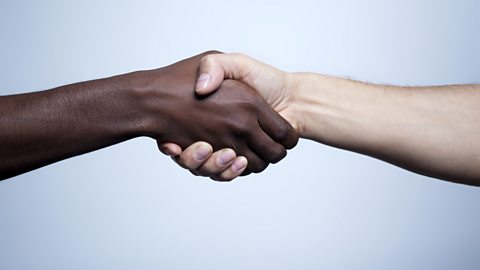Introducing yourself
All German, Swiss and Austrian nationals are required to have an ID card – Personalausweis – showing details of their name, date of birth and other personal information.
Der Personalausweis can be used as a travel document within Europe. The police have the right to demand proof of identity. However, if you do not have any form of identification on your person, they may want to ask you some questions about yourself.

Personal details
Stell dich vor – introduce yourself
Question
Listen to these key questions. What do they mean?
Wie heißt du?
Wie schreibt man das?
Wie alt bist du?
Wann hast du Geburtstag?
Wo wohnst du?
- What is your name?
- How do you spell it?
- How old are you?
- When is your birthday?
- Where do you live?
Did you know?
In German-speaking countries, it is polite (höflich) to shake hands when you meet people or when you leave – far more so than in the UK.
The German term for ‘to shake hands’ is die Hand geben, which literally means ‘to give the hand’.
This practice is so important that from an early age, children are told gib die Hand – shake hands – when they meet people.
Once they have established a firm friendship, many Germans and Austrians will greet friends with two kisses, like in France. But in Switzerland, they tend to greet friends with three kisses.
